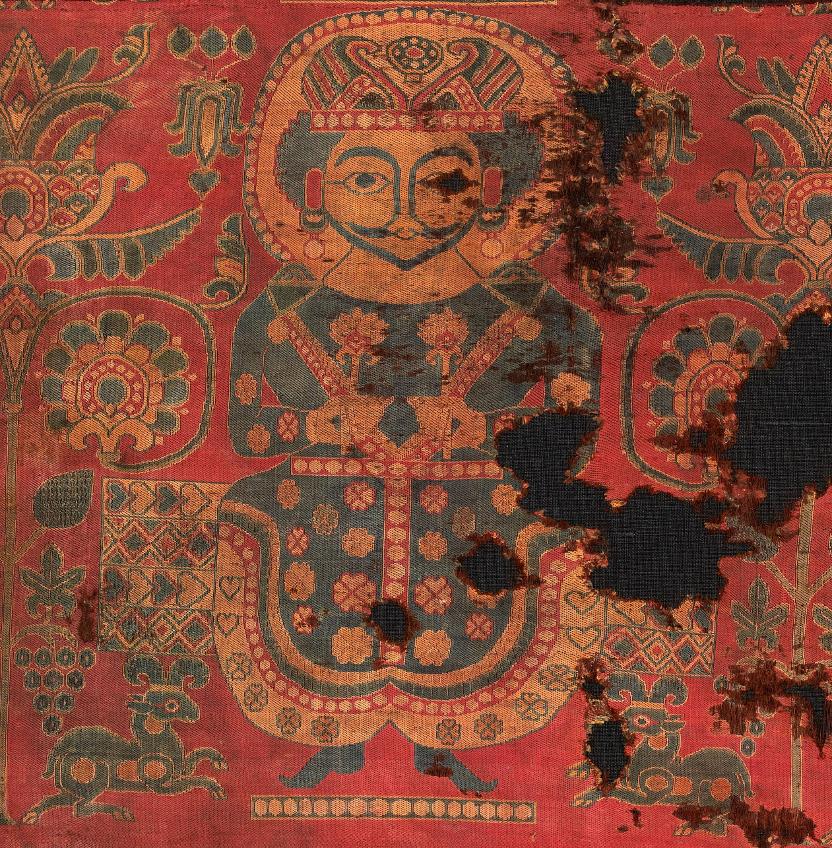
Try Amazon Fresh
Detail from an
Umayyad textile with a Sasanian King,
Iran or Central Asia, 7th-8th century



Samitum-woven silk textile with an enthroned Sasanian king
Iran or Central Asia; 7th-8th century
H: 94; W: 85 cm
The motif of a Sasanian king on a throne carried by ibexes is unusual. A single textile from Egypt and Sasanian silver bowls feature corresponding depictions, but with the ruler seated and leaning on his sword. This magnificent silk shows a king – presumably Khusrau II (r. 591-628), who was deceased at the time – holding a flower in each hand that in turn mimics the flanking “trees of life” with grapes, winged palmettes, and opulent blossoms.
In the 1370s, the North African historian Ibn Khaldun wrote about Muslim tiraz textiles, which bear the names and titles of ruling princes. He believed that the phenomenon succeeded the pre-Islamic royal custom of using true portraits of these rulers or other figures that were to symbolize them.
This textile, woven shortly after the Muslim takeover in Iran and Central Asia, supports Ibn Khaldun’s interesting statement.
Inv. no. 23/2011
David Collection, Copenhagen (new link)